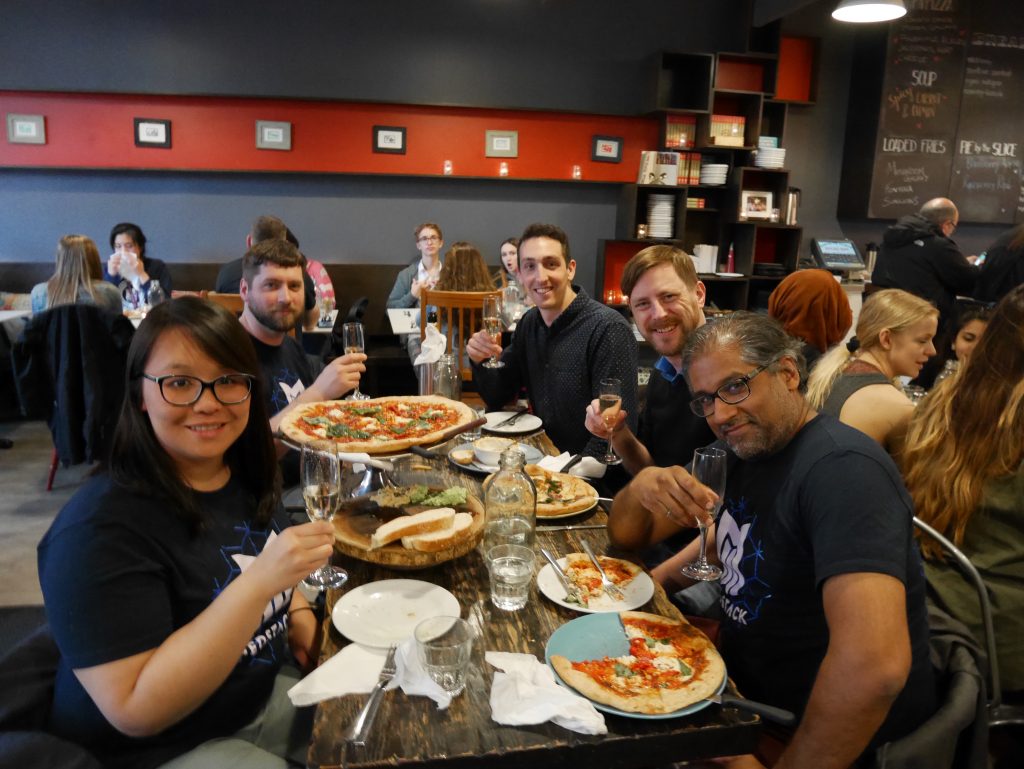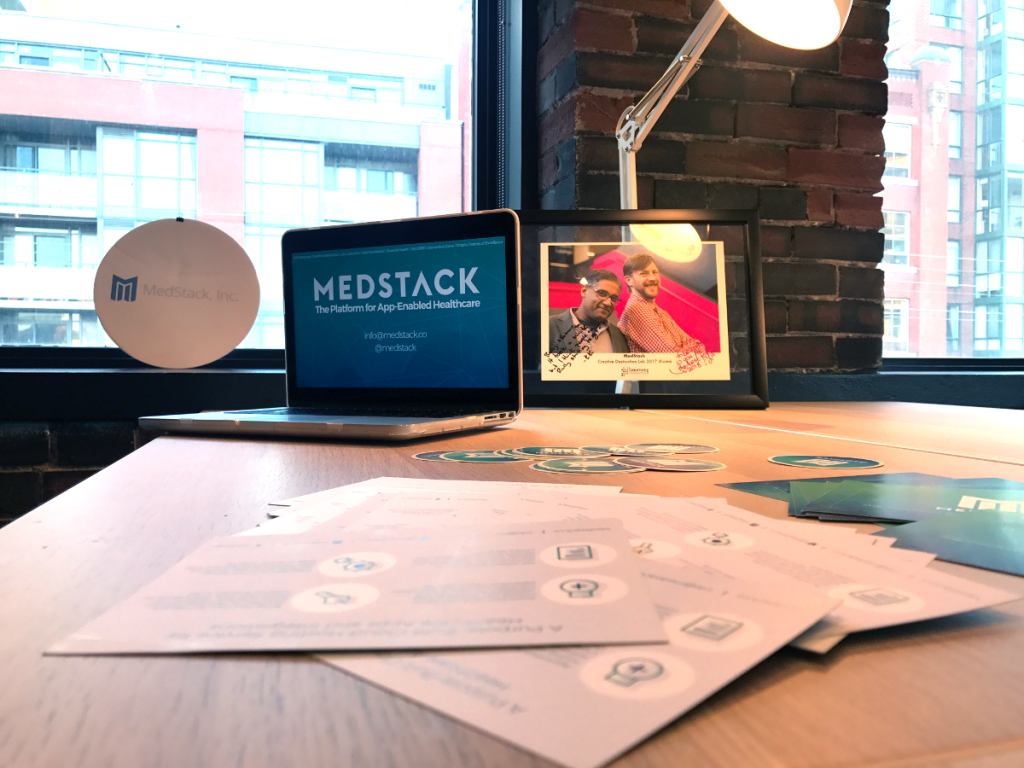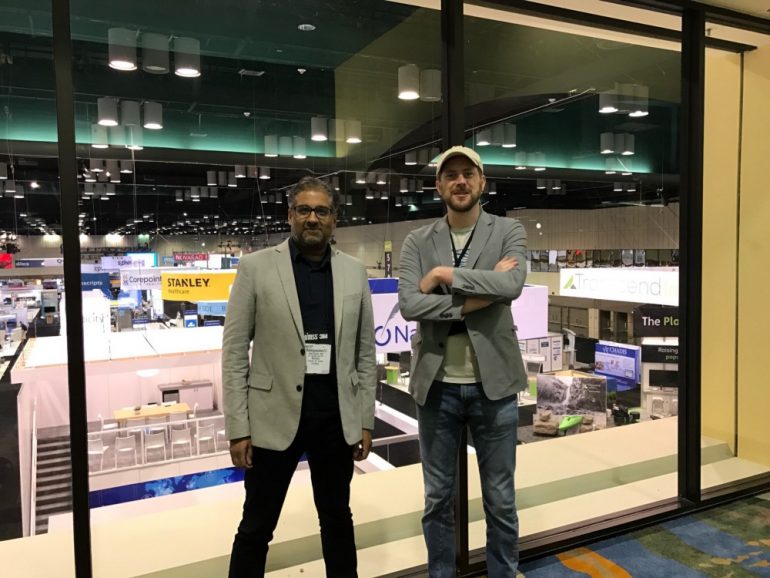As part of a regular series powered by Microsoft, BetaKit interviews prominent Canadian CTOs speaking earnestly on the biggest challenges they face in their role, as well as future technology predictions in their space.
Simon Woodside is a serial entrepreneur and CTO. At MedStack, he’s now focused on applying modern technology to the decades-old problem of information security and compliance for healthcare records.
Sell first, then build
Woodside explained that despite having founded multiple startups, MedStack is the first time he’s reached bigger scale. That said, the company remains “incredibly lean,” with a total of seven employees managing over 30 enterprise medical records companies as clients.
“As a founder and CTO, it was very important to me that we build things only when someone had paid for them,” Woodside said. “I had built tech before without selling it first, and while we got lots of amazing press, no one wanted to buy it.”
“A good product is as much about what it doesn’t do as what it does.”
– Simon Woodside
Using this mentality, MedStack was founded from an opportunity that Woodside had with another client back in his iOS and Android development agency days.
“We were building an app for a client in the medical records space. I knew the company raised $1 million, and the founder confided in me that they spent almost $100,000 on legal compliance,” he said.
Sensing an opportunity for his next venture, Woodside only built the first iteration of MedStack once a client agreed to specific features and had already paid.
As the company scaled, however, Woodside notes that a ‘do whatever the customer will pay for’ mentality isn’t efficient from both a product-development and sales perspective.
“Once you hit a certain number of people paying you to do the same thing, you have to double-down on your core functionality so you can scale much more quickly,” he said. “A good product is as much about what it doesn’t do as what it does.”
Hitting scale, though, creates its own problems — especially for a hosting company, like MedStack, that is online 24/7.

“I’m someone who values privacy and time off, so we needed a process where we could support our clients but still have lives,” Woodside told me.
In order to create a modern, elegant support process, MedStack didn’t look forward, but back to technology popularized 30 years ago.
“I have a pager. It’s connected to automated alarms and my core team has the number,” Woodside said. “If there’s an emergency, they page me. That way, I can turn my phone off to spend time with family but still be in touch for crucial issues.”
The system Woodside has built at MedStack goes in order of importance: an instant message for low priority, then a text, onto a phone call, and finally to a page.
“I started it out of my own desire for privacy, but the system really works because we all have pagers and know that if you page someone, it’s something that needs to be addressed urgently. Thankfully, my pager only goes off about once a month.”
To predict the future, know the past
The role of the CTO, Woodside explained, is about bringing multiple technological pieces together in order to solve problems.
“There are so many tools out there now in different languages that if you are specialized in one area or language, you might miss a huge opportunity to make your customers’ lives easier,” he said.
Woodside argued that the capability to keep up with rapid advances comes from a better understanding of existing technologies.
“You have to surround yourself with people who are complementary to you in personality.”
“Virtual machines were invented in the 1960s. Two-factor apps originated in the early 1980s. If you want to know the future, check out the past. What’s new is the amount of tools that allow small teams to create virtual machines, file systems, or domain entries very rapidly and with little code.”
That said, not all tools are good, and Woodside cautioned against falling victim to PR hype. “A CTO needs to be good at evaluating tools independently and carefully so they can bring the right tools together to build a valuable customer solution.”
Today, customers are very concerned about data security. As compliance and regulatory burdens grow stronger across all verticals, not just healthtech, data security becomes a much more important part of the equation that a CTO must pay attention to.
Without validation comes risk
While many startups talk about the need for balance, Woodside takes a different approach for his team.
“You have to surround yourself with people who are complementary to you in personality and work style,” he said. “However, you also need someone with the right skills when you are talking about tech roles.”
Recruiting is hard – the most difficult part of Woodside’s day, in fact – but the real challenge occurs once you get good people in the door.

“Depending on work style, some people will always be on and others will unplug. That being said, we want to avoid burnout, so we have a mandatory vacation policy – you have to take three weeks per year – and have systems like the bug prioritization text/message/call/page so that people can have a life outside of work.”
For folks thinking of taking the jump from big corporate to startup CTO, Woodside offered a set of criteria to judge.
“I caution all folks at big firms thinking of joining a startup to check that the company has market validation,” he said. “Have a couple of early customers given them money? Have the founders won some money in an idea pitch competition? Do other people invite them to talk about what they are working on at community events?”
“Ask yourself the same questions if you are thinking of founding your own thing or joining a startup. Without validation, you’re taking a huge risk that you’re building something no one will want.”


